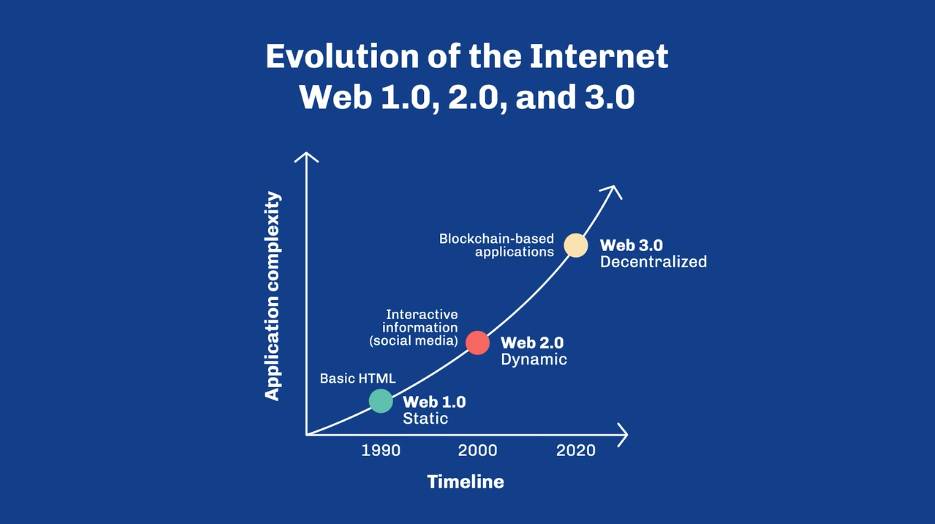Web 3.0, also known as the decentralized web, refers to the next generation of the internet that emphasizes decentralization, user control, and the integration of blockchain technology. It represents a shift away from the current Web 2.0 model, which is dominated by centralized platforms and big tech companies, toward a more user-centric, secure, and open web.

Key Features of Web 3.0
- Decentralization: Unlike Web 2.0, where data and applications are controlled by central authorities (e.g., Google, Facebook), Web 3.0 operates on decentralized networks like blockchain. This means that no single entity has control over the data, and users have more ownership and control.
- Blockchain Technology: Blockchain is the backbone of Web 3.0, providing a decentralized infrastructure for applications and services. It enables trustless interactions, where users can verify transactions or information without needing intermediaries.
- Cryptocurrencies and Tokenization: Web 3.0 introduces digital currencies and tokens, which can be used to access services, govern decentralized platforms, or reward users. For instance, cryptocurrencies like Bitcoin or Cardano (ADA) are integral to decentralized financial systems.
- Smart Contracts: Web 3.0 applications (often called dApps) run on smart contracts, which are self-executing contracts with the terms directly written into code. These contracts automate transactions and agreements without needing intermediaries, ensuring transparency and reducing costs.
- User Control and Privacy: In Web 3.0, users have greater control over their data and digital identities. Technologies like self-sovereign identity and cryptographic wallets allow users to manage their personal information and decide who has access to it.
- Interoperability and Open Protocols: Web 3.0 encourages open-source development and interoperability, meaning different platforms and services can interact with each other seamlessly, unlike the siloed systems of Web 2.0.
- AI and Semantic Web: Web 3.0 also aims to integrate more sophisticated AI and machine learning technologies, allowing the web to better understand and interpret user data, search queries, and content to provide more personalized and intelligent experiences.
Web 3.0 vs. Web 2.0
| Feature | Web 2.0 (Current Web) | Web 3.0 (Decentralized Web) |
|---|---|---|
| Ownership of Data | Controlled by centralized companies | Owned and controlled by users |
| Business Model | Ad-driven, centralized services | Token-based economies, decentralized services |
| Security | Prone to breaches and data misuse | Secured by cryptography and decentralization |
| Intermediaries | Platforms act as intermediaries (e.g., banks) | Peer-to-peer with smart contracts, no middlemen |
| Identity | Managed by third-party platforms | Self-sovereign identity, user-controlled |
Example of Web 3.0 in Action (e.g., Cardano)
Cardano is an example of a blockchain platform that is enabling Web 3.0 technologies. It supports decentralized applications (dApps), smart contracts, and decentralized finance (DeFi). In Web 3.0, users can interact with these platforms without needing to rely on traditional institutions, and they have more control over their assets and data.
For example, instead of using a traditional bank, a person could use a DeFi app built on Cardano to borrow, lend, or trade digital assets in a decentralized, peer-to-peer manner. They control their funds via a wallet and sign transactions with a private key, removing the need for a bank to manage their financial activities.
ELI5 (Explain Like I’m 5)
Web 3.0 is like a big playground where, instead of needing a few people to own and control all the toys (like in Web 2.0), everyone gets to own and manage their own toys, and they can trade, share, or use them without needing to ask a boss. It’s built on new rules that make sure everyone plays fair, and it lets you control what you share with others. Everything is open, and no one can just take your toys away because you have the key to everything you own.

Leave a Reply